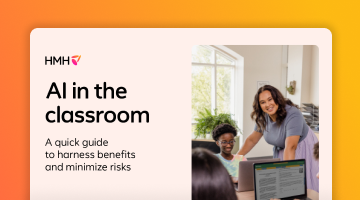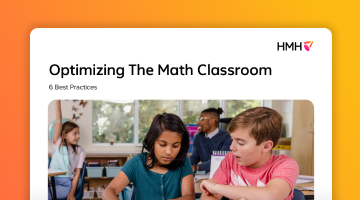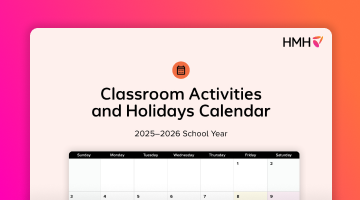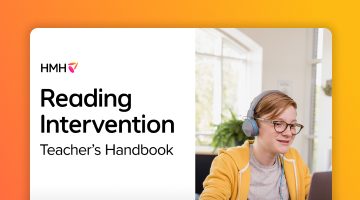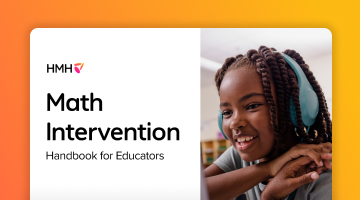
Phonological awareness is a critical early literacy skill that can be developed through intentional, engaging practice. Whether you're working with young students just beginning to explore sounds and syllables, or older students who need a boost in decoding and fluency, the following age-appropriate ideas will make building phonological awareness skills fun and effective for all learners.
What is phonological awareness?
Phonological awareness is the ability to hear and manipulate sounds in spoken language. Fluent readers automatically make connections between letter combinations and sounds to comprehend the meaning of words. In order to do this, they must first understand that words are made up of sound parts. Phonological awareness activities build this critical skill, preparing students to connect spoken sounds (phonemes) to written letters (graphemes) and make meaning from text.
Phonological awareness skills progression
Phonological awareness develops in a predictable sequence, moving from larger to smaller units of sound:
- Word Awareness: Noticing that sentences are made of words.
- Syllable Awareness: Breaking words into syllables and counting or clapping them out.
- Onset and Rime Awareness: Identifying the initial sound (onset) and the remaining part (rime) of a word.
- Phonemic Awareness: Understanding that words are made of individual sounds, or phonemes.
Ensuring students master each phonological awareness skill in this progression will support all readers, whether they are young learners just beginning to hear syllables, or older students needing support with more advanced phonemic skills. Systematic and explicit instruction in phonological awareness is particularly important for English language learners because it forms the foundation for understanding the particular sounds of English. Below are some helpful activities to support all students with phonological awareness.
Early phonological awareness activities
Activities that support phonological awareness for young learners are most effective when they are short and playful. Here are some early phonological awareness activities that align with the first three parts of the skills progression (word, syllable, and onset and rime awareness).
When selecting phonological awareness activities for younger students, remember that before they are able to identify and manipulate individual phonemes, young learners must first develop broad sound awareness. So start with simple skills, such as rhyming and clapping syllables, and gradually build up. Also consider the attention spans of young learners and keep activities short and interactive with songs, movement, and manipulatives. Stories and games are also great ways to keep young students engaged.
1. Word counting
In this activity, students practice hearing individual words in a sentence. It works well as a whole-group warm-up because it’s engaging and easy to model. All you need is a simple sentence that can be expanded by adding more words for students to count.
- Say a simple sentence: The dog runs.
- Have students clap or move a counter for each word.
- Say: The dog runs fast. Ask students to count again.
2. Story time rhyme
Rhyme identification is an important part of word awareness. This activity is a great way to make story time double as phonological awareness practice. Simply take any two words from a story. Say them out loud and ask students if they rhyme. Once they get the hang of it, pick out and say a word from a story for students to make their own rhymes with.
- Read a rhyming books and pick out words from the text to focus on.
- Without showing the words ask students: Do cat and hat rhyme? How about cat and dog?
- Extend: Say a word and ask students to make a silly rhyme.
3. Syllable clapping
Syllable clapping (or tapping) strengthens students’ ability to hear individual syllables within words. Closely monitoring for accuracy helps ensure students are identifying the correct number of syllable, so this activity works best in small groups.
- Clap or tap for each syllable (ti-ger = 2, el-e-phant = 3).
- Use blocks, drums, or stomping for variety.
4. Odd one out
This activity can be adjusted to focus on several different aspects of word awareness, including rhymes and beginning sounds. It works well as a quick partner game where students can quiz one another.
- Present picture cards (bat, cat, dog). Ask which doesn’t belong.
- Start with rhymes, then progress to beginning sounds (e.g., ball, box, car).
5. Sound sorting
All you need for this activity are picture cards for students to sort by beginning sound. It works well as a literacy center activity where students can work independently with the cards. Check in with students or have them check each other’s sorting to monitor accuracy.
- Provide picture cards (sun, sock, ball, bat).
- Have students sort by beginning sound (s vs. b).
Phonological awareness for older students
Activities that improve phonological awareness for older students are most effective when they are aligned to specific learner needs, are age-appropriate, and focus on advanced phonemic awareness skills. Check out these activities that build phonological awareness for older students.
When selecting phonological activities for older students, remember to choose age-appropriate content so students don’t feel like they are working on skills perceived to be for younger learners. Activities that feel like word games will allow students to have fun and be challenged. Also keep efficiency in mind. Oftentimes older learners have specific gaps that need to be addressed. Use diagnostic assessments to pinpoint and focus on these needs.
1. Delete phonemes
This activity can be done in whole- or small-group as practice, or one-on-one as an assessment tool to identify gaps in phonemic awareness.
- Say stable. Ask students to repeat without s, to get table.
- Try medial and final sounds (plane without l = pane).
2. Substitute phonemes
Once students are able to delete phonemes, they can expand their skills by substituting phonemes. Consider timing this activity for added challenge and motivation.
- Say letter. Ask students to change l to b, to get better.
- Challenge with vowel changes (better to bitter).
3. Blend phonemes
When asking students to blend phonemes, it can be helpful to guide them to move a finger or a counter for each sound and then slide through all sounds to say the word. This gives them a multisensory understanding of the relationships between letters and sounds.
- Say the sounds r – u – g slowly. Ask students to blend the sounds and say the word rug.
- Try other CVC words with short vowels (e.g., tap, bed).
For a classroom activity with modeling, guided practice, and application opportunities, download the following blend phonemes activity.

4. Word chains
Word chains are a fun way for students to see how changing a single sound can result in a new word. Consider using this activity in literacy centers.
- Start with a word, such as cat. Ask students to change one sound at a time (e.g., cat, cot, cop, cap, map, mat, mad).
- Provide a more challenging word, such as soap and repeat the steps (e.g. soap, soak, sock, sack, back, bark, dark).
Incorporating engaging and fun phonological awareness activities helps students build the critical understanding that words are made up of sounds. This supports learners throughout the grades by preparing young learners to connect sounds to letters, helping older learners decode complex words, and supporting multilingual learners with the sounds of English.
***
HMH core, intervention, and supplemental programs are rooted in the science of reading. Find out more about our evidence-based approach to teaching a child to read.
Get our free Science of Reading eBook today.

